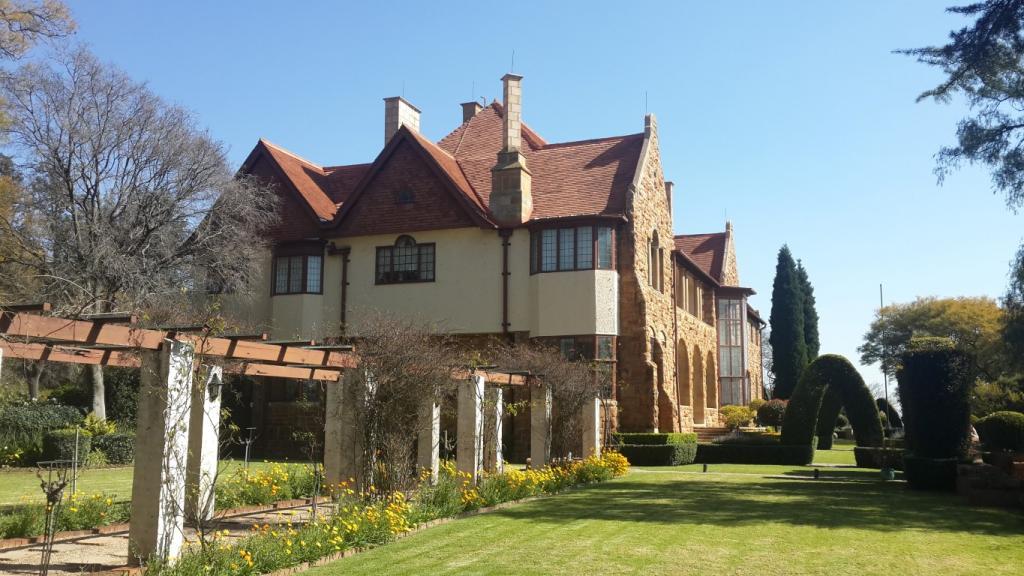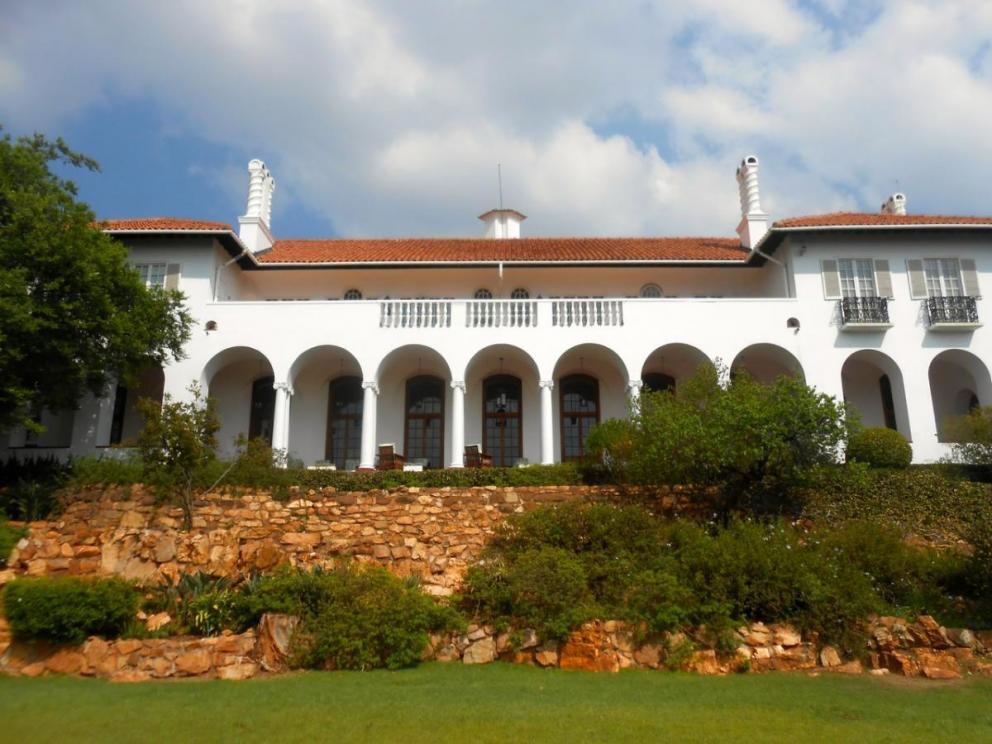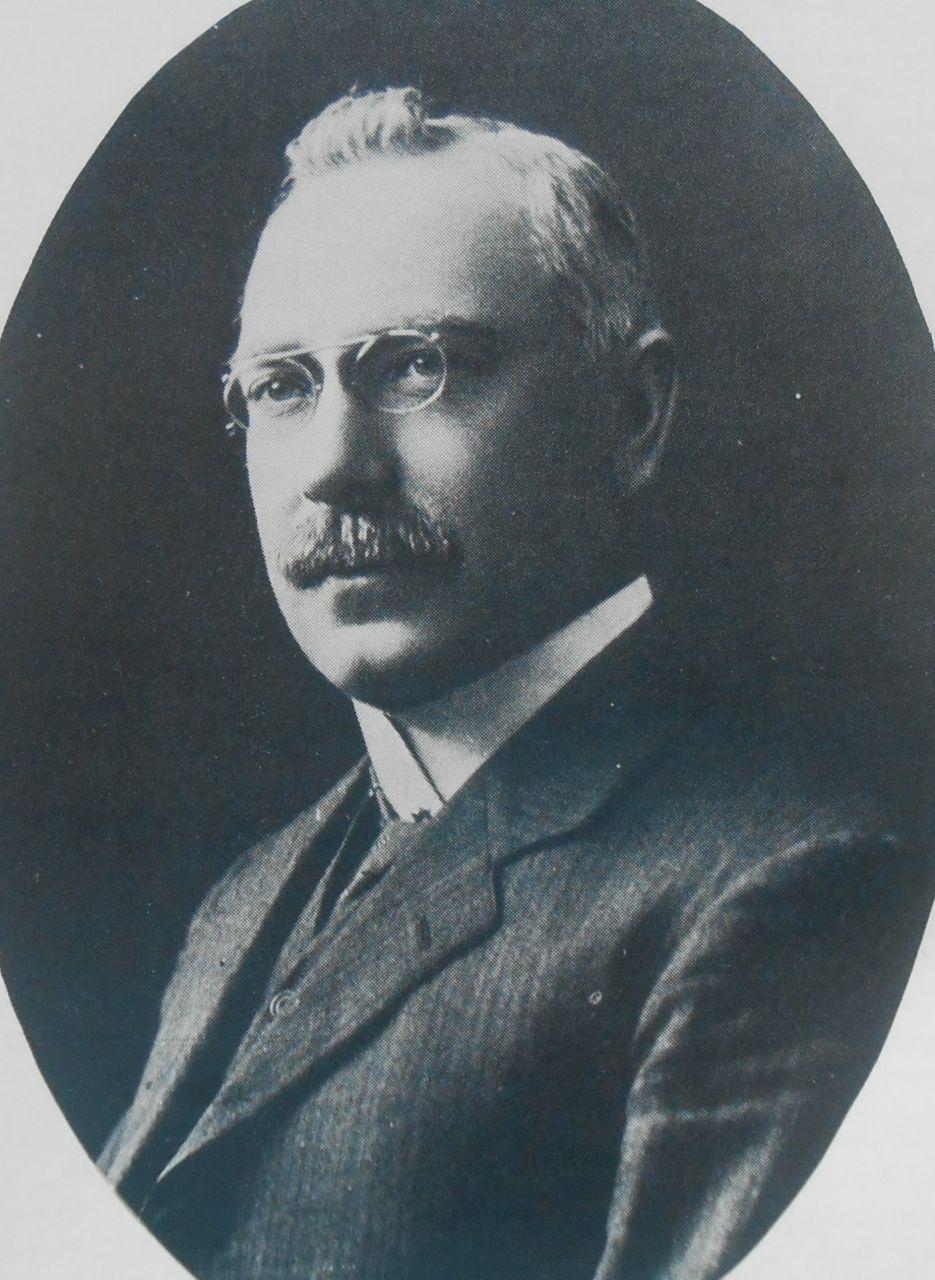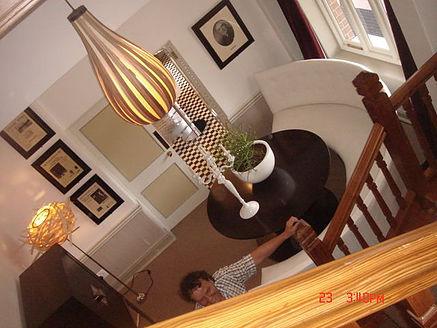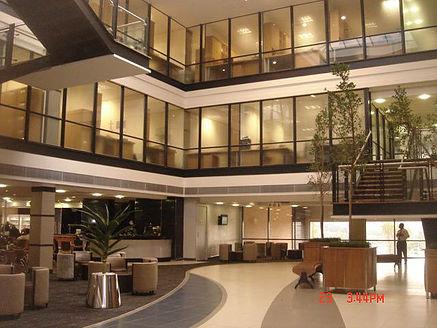Disclaimer: Any views expressed by individuals and organisations are their own and do not in any way represent the views of The Heritage Portal. If you find any mistakes or historical inaccuracies, please contact the editor.
In the article below, journalist and joburg enthusiast Lucille Davie takes a look at the restoration of one of Parktown's historic homes. The piece first appeared on the City of Joburg's website on 31 March 2010. Click here to view more of Davie's work.
The restored Wanooka in Parktown has had a strong association over the years with engineers and general managers of the South African Railways and Harbours (SAR & H). But its accountants and auditors who have given it a new breath of life.
The house, built in 1902, was constructed for Henry Smith Greenwood, who was the resident engineer of the central division of the Central South African Railways. He lived in the Tudor-gabled Edwardian mansion for six years, until 1908, when he returned to his native Ontario in Canada.
A string of other engineers followed Greenwood, enjoying the house’s modest but attractive viewpoint at the westerly end of Parktown. The house’s significance, therefore, derives from its association with the development of the SAR & H.
Now, Wanooka is to be “an executive entertainment area that can host meetings and functions“.
The house has become part of the new offices and campus for KPMG, the auditing firm, together with the angular black glass building behind it, originally the Kangra / Hunt Leuchars & Hepburn Limited (HL&H) building and built in the mid-1980s. The architects, Impendulo Design Architects, demolished the office building, saying it was unusable, primarily because it had very limited parking.
The building, linked to the first floor of Wanooka by a bridge, had been occupied by just 10 people for the last five years, says Impendulo architect Brendan Hunkin, the project manager for the new building and the restoration of Wanooka.
“It was very decadent for HL&H,” says Hunkin. It was built with large, extravagant offices, and an auditorium, with typical ‘80s decor.
Tiles, carpets, furniture and lighting were looking very jaded and old-fashioned, says Hunkin, having never been updated since the ‘80s. In addition, the bridge linking the building to the house was at the wrong level, totally obstructing the view of the house from inside the office block.
Greenwood commanded the royal engineers in the Imperial Military Railways (IMR) in Johannesburg.
“The role of the railways in the Anglo Boer War is often underestimated,” says heritage champion Flo Bird. The Boers kept on blowing up the lines and the water supply trains, and the IMR moved in to repair the lines, keeping the trains moving. After the war Greenwood ensured that carved granite headstones were put on the graves on every Canadian who died in the war, adds Bird.
In 1980 the site was sold to HL & H, who demolished a set of outbuildings belonging to Wanooka, and built a four-storey glass-fronted building behind Wanooka, joining the first floor via a walkway.
Demolition and new building
Impendulo decided that the office building had to be demolished. Three levels of underground parking were created but the same attractive angled line of the front of the building was re-created.
The three-storey building was built between March 2008 and December 2009, and all floors are designed on an open-plan design, even for directors, stresses Hunkin.
“We replicated the black glass in its northern line,” explains Hunkin, “the sight lines to and from the house allow people to see in all directions, and always see the house.”
Although the new building is much bigger, it retains the height of the old building, at 12 metres. The triple-volume interior atrium, facing north with a great view of the house, has been retained too. The old building was built in a triangular shape, but, says Hunkin, this has been changed to rectangular shape.
Parktown and Wanooka history
Parktown traces its history back to 1893, when Randlord wife Florence Phillips, who lived in the upmarket suburb of Doornfontein, rode her horse over the Hillbrow ridge and discovered a quiet stretch of veld that offered an escape from the dust and noise of the growing gold-mining town.
Parktown became the garden suburb of the town, encircled by a fence, tree-lined lanes and a meadow where cows grazed. Parktown boasts some of the city’s grand mansions: Dolobran, North Lodge, The View, Hazeldene Hall, Savernake, Northwards, Emoyeni and Arcadia. The grand Hohenheim was torn down to make room for the Charlotte Mxenge Johannesburg General Hospital.
Northwards (The Heritage Portal)
Villa Arcadia (The Heritage Portal)
Wanooka was originally a square, single-storey home, with a front veranda and a back stoep, and a generous, inter-leading dining room and sitting room, a study and library, four bedrooms, one bathroom, and kitchen and pantry, according to a reconstruction plan of the house – the original plans are missing – by GM van der Waal, in a 1980 report commissioned by HL&H.
In 1920, just prior to the house being bought by William Wilson Hoy, who was the general manager of the SAR & H in 1910, a second storey was added.
William Hoy (Railways Magazine 1979)
Hoy moved into the house in 1922 with his family. He had a big influence on the railways – at one time it was called WW Hoy and Co – in amalgamating and modernising the railways. He took a keen interest in tourism, helping to put the Kruger National Park on the world map.
The additional storey changed the configuration of the interior: one of the smaller bedrooms on the ground floor became the scullery, a wall was constructed between the dining and sitting rooms, and the main bedroom’s dressing room became a staircase, says Van der Waal. The wooden veranda balustrades were replaced by brick arches. A bathroom and four bedrooms were constructed on the first floor, which was finished with a north-facing veranda running around both the west and east sides, allowing the two front bedrooms entrance to the veranda through French doors.
Later the exterior walls of the house, created with “splashes of plaster-cement [were] thrown onto the wall to create a rough surface”, were painted white.
“This sterile white appearance, characteristic of the neo-colonialism of the twenties and thirties, was a radical change from the romantic red brick walls and green verandah,” notes Van der Waal.
The house is built on a stone foundation, and together with a rough surface of the walls, the trend at the time was to make the house appear natural, and satisfy the demand of the time for “simplicity and honest materials”, says Van der Waal.
“Together with the kopje stone of the plinth, the red brick quoins [corner edgings], green painted woodwork of the verandah and red painted roof, the house would, however, have appeared very colourful.”
Floors, doors, picture rails and skirtings were oregon and deal, and some of that remains. Ceilings were pressed steel, doors and windows were fitted with brass handles and latches.
In 1951 Pieter G Joubert, the first person not to work for the railways, moved into the house, and in 1968 he bought the freehold from the government. “By then the house was fairly dilapidated and its upkeep became very costly,” adds Van der Waal.
Restoration of the house
Bird was consulted in the restoration of the house, and the construction of the new office building.
The original building, designed by architect Louis Karol, was an example of an “enormously important conservation” project, says Bird. It acted as a mirror with its wall of black glass, reflecting the splendour of Wanooka.
Bird likes the blackness of the building – it “doesn’t impinge on the consciousness”, she says.
“They used the same language as Karol had used,” she adds. She says that Karol didn’t want the office building to overwhelm the house, an effect he achieved. The building was also kept at three storeys so as not to be taller than the house.
The office building does not overwhelm the house (The Heritage Portal)
She is particularly pleased that Impendulo have lowered the garden on the western side of the house. It had been raised about a metre, covering the base of the house and the entrance stairway.
In the process fine brick work has been exposed. The restored garden has brought back a sense of proportion to the house, she says. The new owners and staff love using the garden.
A ground-floor veranda on the eastern side of the house has been added, which gives the house necessary balance.
The house has been painted in traditional white and olive green, finished with rich red brickwork edging the arches, windows and corners. Some of the corner brick work has been created with plaster, which has been finished and painted red, to imitate the finished brick work elsewhere.
Wonderful colours and brickwork (The Heritage Portal)
Interior of the house
The interior largely still has the feel of the original house, with rooms coming off a passage on the ground floor, but with a new satellite kitchen and toilet upstairs.
The rooms, now conference rooms with a bar, have been decorated with elegant trendiness. The new bar boasts a black and white checked floor, taking up a former bedroom upstairs; silver and gold wingback chairs make a statement in a corner; several oversized porcelain chess pieces provide focus against a window; and stylish candelabras, chandeliers and lamps add a modern stylishness to the house.
Silky modern wallpaper and velvet curtains have given the rooms a plush feel.
The fireplaces have been restored, now with gas heating, says architect Archie Norval of Impendulo. He was charged with the interior design and decor of both the house and the office building.
The cornices and dado rails have been restored, and the Oregon balustrade is now gleaming in its naturalness.
Inside Wanooka (Lucille Davie)
Office building
Norval has waved his magic wand in the office building too. The ground floor canteen has New York subway wallpaper, giving it a racy feel. Other walls are huge splashes of poppies or peaches. Bold red and black retro chairs and ottomans have been placed in the large triple-volume ground floor area.
Bamboo stairs, Naboomspruit sandstone and planters with cacti give the offices a fresh, enthusiastic look.
And it seems to have worked on those who work there, says Norval.
“It’s pleasant to see how they enjoy this building. It has been such fun to do.”
Norval says that he took KPMG executives to see the choice of furniture, inviting them to think differently about the decor.
Norval confirms that Arvind Hari, executive director of finance, has had a smile on his face from “here to there”.
Impendulo consultant Robin Lydall, who liaised with the architects, says he is very pleased with the end result. He says they were initially advised, before Norval entered the picture, to consider heavy Edwardian furniture, but he felt it “wouldn’t look right”. KPMG took Bird’s advice of not trying to make the building look like the old one, but rather making it look different, in that way highlighting Wanooka.
Inside the office building (Lucille Davie)
There’s another reason they are so pleased with Wanooka. “We are also getting on – we have been around since 1895. It’s nice to go to somewhere which is as old as us,” jokes Lydall.
Receptionist Valentine Ngoma, who moved from the old KPMG offices in Empire Road, says it “feels like another world”.
The new building is phase 1 of four phases, with demolitions of buildings across the road having already taken place. Once complete, all buildings will have a view through to Wanooka on St Andrew’s Road.
Maybe accountants and auditors are not such a stuffy lot, after all.
Lucille Davie has for many years written about Jozi people and places, as well as the city's history and heritage. Take a look at lucilledavie.co.za
Comments will load below. If for any reason none appear click here for some troubleshooting tips. If you would like to post a comment and need instructions click here.

